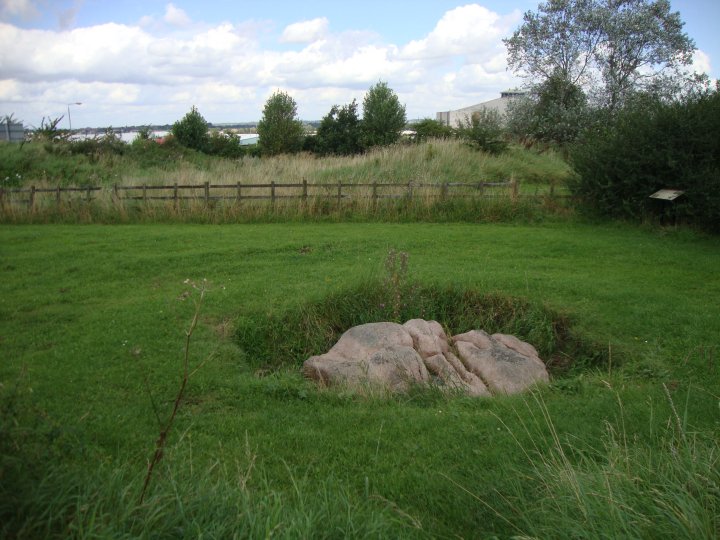|
|
|
The Humber StoneStanding Stone / Menhir
|
|
 Image Credit: Chance - Aug 2012
Image Credit: Chance - Aug 2012Posted by Chance 20th March 2014ce |
NB: Unless otherwise stated, this image is protected under the copyright of the original poster and may not be re-used without permission. |
Comments (2) |
|
|
Compared to the photos from ten years ago, yours make it look like nature's reclaiming the hole a bit? But it looks nicer like this I think. Does it look really firmly embedded or does it look like there's not much more of it below ground? I thought the bit of Humberwitch's folklore you posted where it said 'it's believed to go down three metres but only one metre has been revealed' sounded really weird. Weirdness being relative when you're talking about big weird folklorey stones of course. It did remind me of other stories about stones going as far down into the earth as they are above (invariably total exaggeration as is found when they fall over). But if the stone is supposed to have been upright at one point, it can't be very thick at all?? And another thought, are the runnelly bits proof that it was stood upright, like the grooves on other stones? It must be quite soft is it? |
 Posted by Rhiannon
Posted by Rhiannon20th March 2014ce |
|
Hi Rhiannon, yes this site looks a bit different from the earlier photos. There was no mention of “The Friends of the Humber Stone” anywhere; just a sign saying the site was maintained by the Leicester City Centre parks Services. The earlier photos seem to suggest that the area around the stone had been dug away and the wooden planks fitted, forming a walkway around the stone. I didn't get down into the hollow as the soil around the stone has now been built up around it, but it did look firmly embedded. The notice board said "Until the mid 18th Century it stood almost ten feet tall in a hollow". It went on to repeat the bit about "Legend has it that the local farmer had the top broken off to make it easier to plough the field. From that point on he never prospered, eventually losing all his land and wealth, dying in the local workhouse six years later". The notice board also stated "The standing stone (Menhir) of red granite is derived from the great glacial erratic, deposited here after being swept down from the Mountsorrel area during the ice age, some 400,000 years ago". So, no it is not a soft stone and must had witnessed a lot of water and ice moving over it to have caused the deep groves on the area now visible. If the top has been "broken off", the break must be underground, as all the visible parts seem naturally weathered. After seeing this Mountsorrel red granite type stone, I began to see it all over the city in the kerb stones and outside large Victorian public buildings. The stone defiantly turns a deep crimson when wet and looks like it might have come from hell. There is mention of an ancient trackway that leads up in the direction of the Humber from Leicester, passing by this stone. |
 Posted by Chance
Posted by Chance20th March 2014ce |
| You must be logged in to add a comment | |



